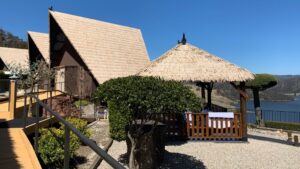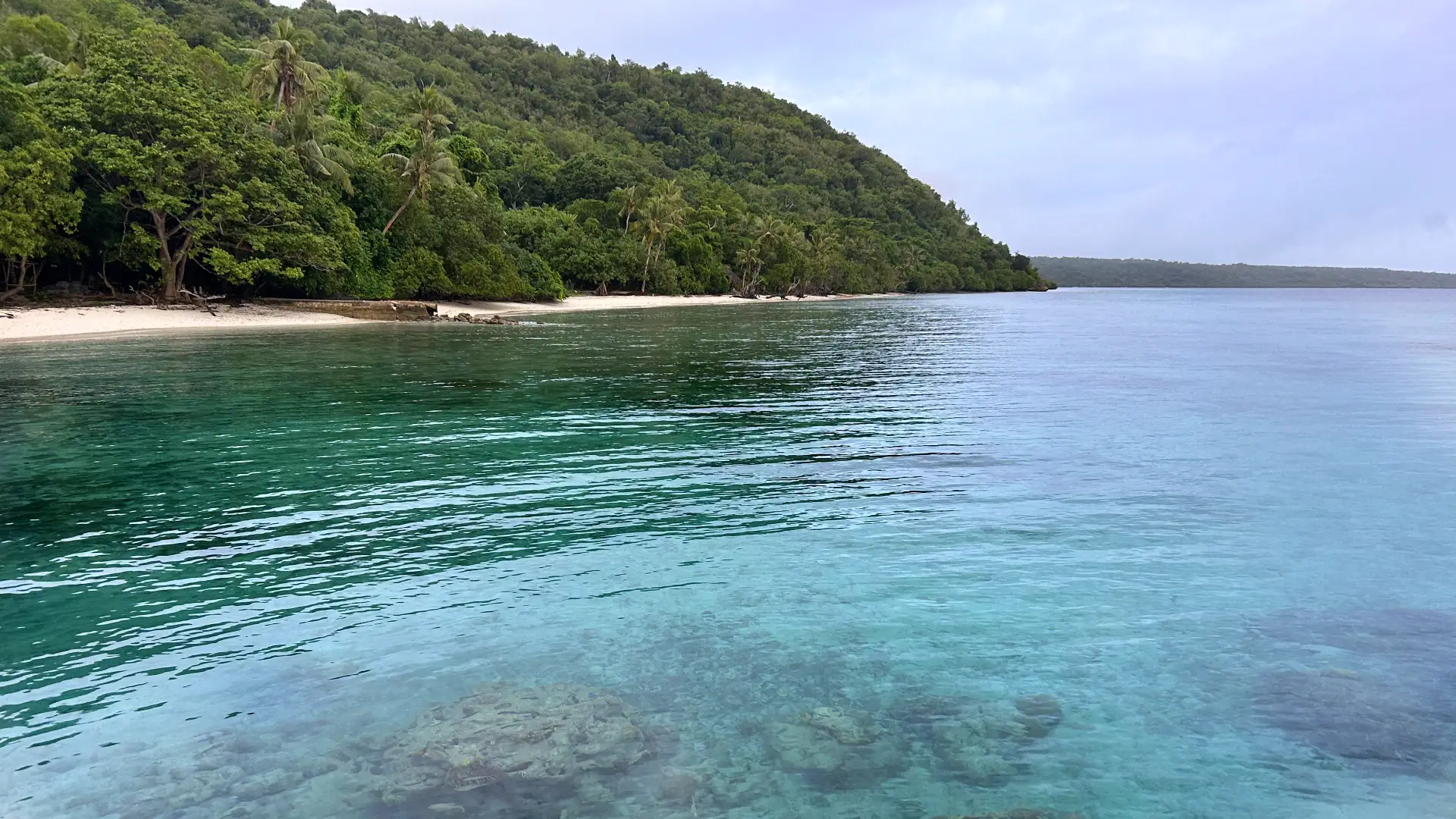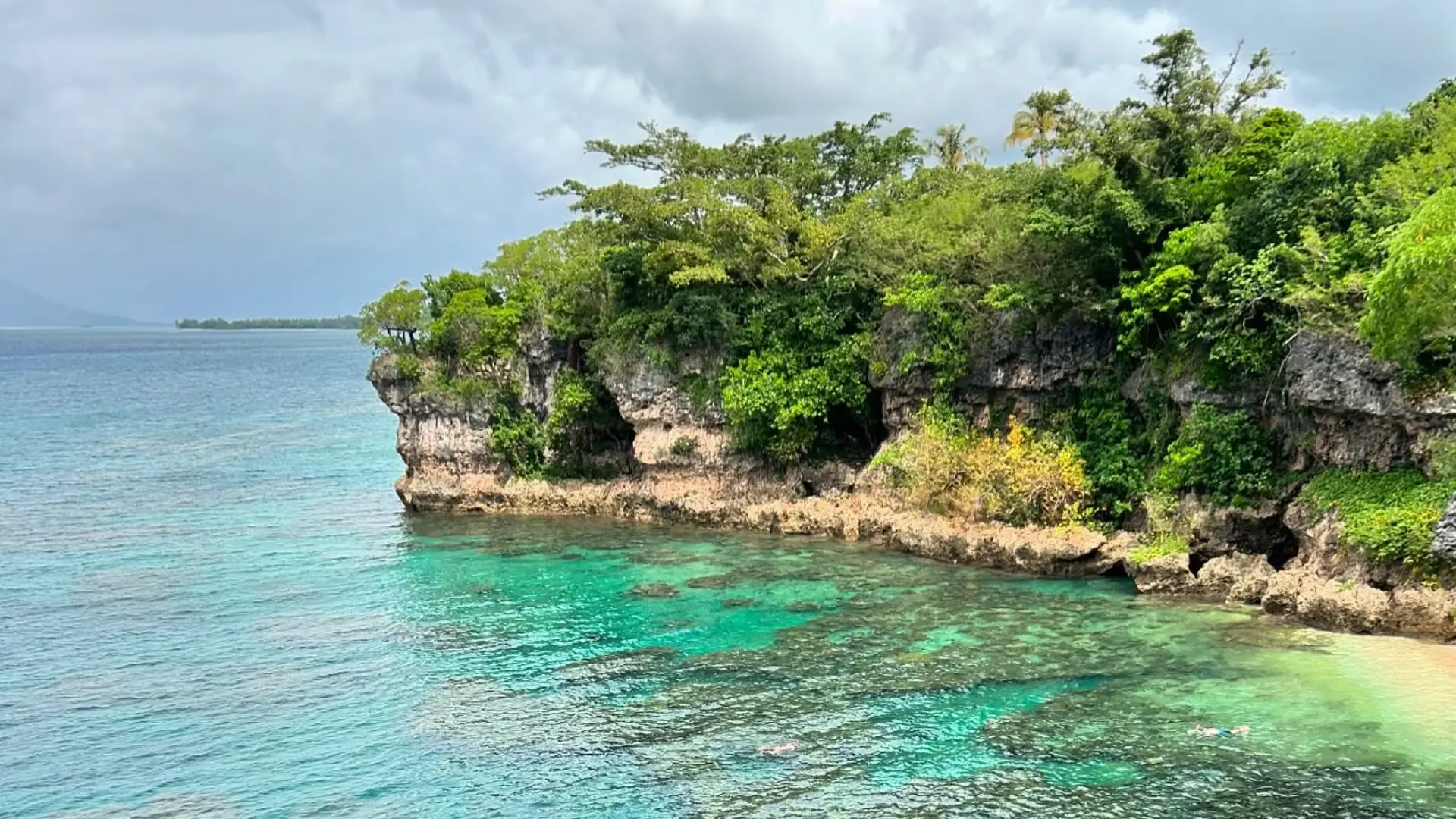When most people think of the Blue Mountains, images of the iconic Three Sisters or the cascading Wentworth Falls come to mind. But, if you drive a little further, you’re in for a real treat. Here, you can experience a Japanese onsen without leaving Australia, let alone New South Wales, at the Japanese Bathhouse.
More than just relaxing, hot baths can offer a host of benefits, from stress relief and improving sleep, to relieving pain and even burning calories. And that’s a good enough reason to head to the picturesque Japanese Bathhouse in the western Blue Mountains.
Thankfully, unlike onsens in Japan, you’re allowed in these hot pools both in swimwear and if you’re tattooed.
TL;DR: Japanese Bathhouse review
- Would we go back? Yes, but only to the baths
- Location: South Bowenfels, NSW
- Price: $110 per person for three hours (an increase of $15 since our 2022 visit)
- Accommodation available? Yes
- Food available? Yes

The hot pools
You don’t have to go far from the change rooms to step into the first hot pool A few baths are within a metre or two of walking outside. They’re partially covered too, offering protection from the sun or rain.
Through a Japanese-inspired rock garden, you’ll get to the hottest of the pools – kept at about 40 degrees, according to the guide who was showing us around the facilities.
There’s also an indoor bath area, with one larger hot pool and a cold plunge pool. There is a wall of windows, so even if you are indoors you’ll be able to take in the view of Lake Lyell (although it may be a bit steamy!).
The indoor section also has a herbal steam room. We found the steam to be rather dense in here, so watch where you’re walking in here so you don’t accidentally take a seat on someone else’s lap.
Opposite the indoor baths, there are three large, Japanese-style, thatched-roof huts. Inside these, you’ll find the private baths. You can book them as part of a package (starting at $420 per couple), which includes an hour’s use plus a three-hour pass to the rest of the bath house.
The real treat here, though, is the cave baths. Tucked into the hillside beneath the huts, there is a “cave” with four small, two-person tubs. The first two closest to the entrance offer incredible views over the lake and surrounding hillsides.


Two other areas make up the rest of the Japanese bathhouse.
The first, you get to by walking through an unnecessarily confusing bamboo maze – but, to be fair, it does have a lovely effect.
Passing by two hanging “relaxation pods”, you’ll come to a space with five two-person tubs. Three of them are the same as the baths found in the cave, round and bushel-like. The other two are made of stone, with one of them tucked around the corner offering a near-private experience overlooking a quiet rock garden.
On the other side of the bamboo maze is the biggest and most varied bathing section.
Splaying out from beneath a gazebo, there are six single-person stone tubs. Beneath an iconically Japanese red torii gate, there’s a larger stone tub made for two. It’s easily the most exposed bath in the complex, and will likely be quite warm in summer with full exposure to the sun.
Tucked behind the gate is another cave-like area. In here, there are four mushroom-shaped pools at a very pleasant temperature. The kind you could sit in all day without getting too warm or cold or worrying about the heat of the sun.
Lastly, there are two pools on the opposite side of the single baths – one smaller one exposed to the sun, and another larger one that is mostly covered.


Where is the Japanese Bathhouse?
The bathhouse is in South Bowelfels, NSW, about a 15-minute drive from Lithgow, just west of the Blue Mountains.
It’s a 45-minute drive if you’re coming from Katoomba, or a two-hour drive if you’re coming from Sydney CBD.
How to get there
By far, the easiest way to get to the Japanese Bathhouse is to drive there yourself.
If that’s not an option, public transport isn’t available directly to the baths, but you can take a train to Lithgow. It’s 15 minutes away and you could then call a taxi or Uber to take you the remainder of the way. According to Uber’s website, it’s estimated at $25 each way for the ride.
Where to stay for the Japanese Bathhouse?
There are two on-site accommodation options, and both are only available as packaged stays:
- Kitsho Kaku No Budget offers basic, Western-style, motel-like accommodation for $1,040 per night for two
- San Sui Kaku gives guests the opportunity to stay in Japanese-style accommodation for $1,200 per night for two
Both packages include:
- 60-minute massage per person
- Tea
- Robe and towel hire
- One day pass for the baths per person
If you’re after a secluded accommodation option nearby, a few options that are more reasonable include Eagle View Escape (from $290 per night) or Seclusions (from $305 per night).
Alternatively, you can stay in Lithgow, just 15 minutes away. Here you’ll be able to find budget accommodation options in the $100-$150 range.
Note: We didn’t stay on-site, so can’t speak for the quality of the accommodation. The price seemed quite high for what you get, especially considering it didn’t include any meals.
Where to eat
There is an on-site restaurant and teahouse, which is a tranquil, calming space.
But, be warned: it’s not cheap.
Typical Japanese fare, including udon, edamame and takoyaki is served at prices around three to four times what you could expect at a restaurant in the city.
The quality of the food is quite high though. We shared a few dishes, including teriyaki chicken wings, Japanese fried rice and a unique bean curd-wrapped kimchi and cheese dumpling. Although the portions were small, since we weren’t very hungry, we were satisfied.
If you want to eat here though, there’s one caveat to keep in mind; it does take up some of your bath time. If you want to eat first, you need to start your three-hour session before entering the restaurant. However, the food was served pretty quick. Alternatively, they do let you stay and eat after your time is up. So if you want to make the most of you session, eat after.
We opted to eat first as it was already 1pm an we hadn’t had lunch, but did stay for a tea after.
Teas cost $10 for a small, 250ml pot.
It’s $220 for a three-hour pass to the baths or $190 for all-day entry. It’s 10% more if you’re visiting on a long weekend.
We stayed for three hours and felt it was plenty.
Unless you’re staying for treatments such as massages, this is probably enough time. It does state on the bathhouse’s website, though, that time allocated to massages does not affect the time you have for bathing.
Open rain or shine, the bathhouse does have covers over the majority of the pools. There’s only two that are completely exposed to the elements. But, you’re already getting wet!
Hours are pretty limited here, with the baths being open only on weekends.
Fridays: 2pm-9pm
Saturdays: 12pm-9pm
Sundays: 11am-6pm
On some long weekends, it’s also open Mondays from 11am-6pm.
Yes! No walk-ins are accepted.
When were we last the Japanese Bathhouse?
Our most recent visit to the Japanese Bathhouse was in March 2025. It was a cool and wet day, but still enjoyable and the sky was clear enough that we could still enjoy the views of Lake Lyell. On our first visit, it was a clear and sunny day. We’d happily go back with either weather condition.
This post was originally published in September 2022.






